   |
| • What's an Etching? • | • Etching Gallery • | • Etching Tutorial • | • Contact The Wretch • | • Etching Links • |
| - Etching Guide and Tutorial : The Acid Bath - | ||||
| tool list | prep plate | apply ground | transfer art | hard ground | soft ground | aquatint | acid bath | ink and print | etching tips |
Etching the Plate: Now that the plate has been worked, it needs to be put in an acid bath. That's right, a bath of acid! The acid will eat (etch) the exposed / partially exposed areas into the plate. The length of time the plate has to spend in the acid bath is dependent on how strong the acid is and how much plate you have exposed. The more exposure you have, the more active the acid; meaning less time in the bath. With soft ground and aquatint you can vary times to get lighter or darker shades. You can take the plate out at intervals and add more hard ground or stop out varnish to areas of the plate you no longer wish to be exposed; making the area lighter than the areas exposed to the acid longer.
|
|
 |
You need an acid box! You are probably thinking the most dangerous thing about etching is accidentally melting your hand away. Actually, The most wretched part of etching is the acid fumes. An acid box is essential and I consider it a must. So... if you don't have an acid box, you can't etch. Sorry. Maybe try some drypoint or something! |
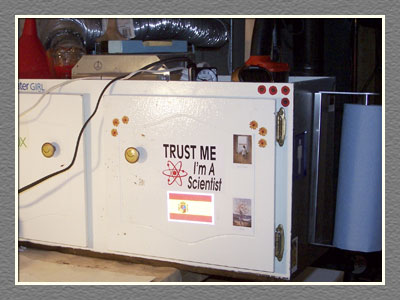 |
An acid box is a must. The etching process can produce some very nasty fumes. I made mine from an old kitchen cabinet (luckily my friend remodeled his kitchen). I cut a hole in the top; added a bathroom fan and a vent to the window. I blocked off the window except for the fan hole. 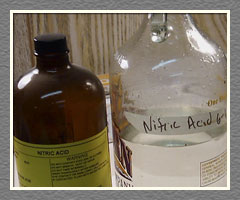 |
1. Put the plate in your pyrex or other acid resistant tray. Put the tray in the acid box. Pour the diluted acid into the tray. 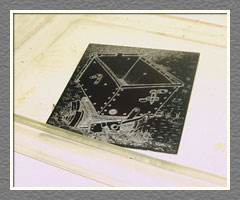 |
2. Bubbles will form as the acid bites into the plate. These can affect the quality of the line. Use a duck or goose feather the periodically brush the bubbles away. 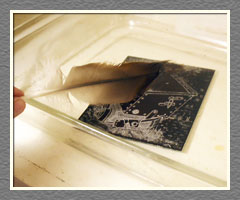 |
3. When you are done biting, take the plate and drop it into a waiting tray of water. If adding a stopout, make sure it is fully dry before putting the plate back into the acid. 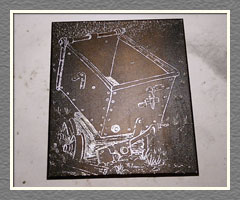 |
*Note about Biting: You should be able to clearly see the line bitten into the plate. When I have doubts if the plate has been in the acid long enough, I will tend to leave the plate in the acid longer. For aquatint, I really recommend running a test plate to pinpoint acid bath times. I have found it can vary so it it is best to find out through testing. | ||
| • Go to the Next Step in the Etching Tutorial: Inking and Printing • | ||
| - What's an Etching? - | - Etching Gallery - | - Etching Tutorial - | - Contact The Wretch - | - Etching Links - |
| © 2012 All Contents Property of The Wretched Etcher - site designed by Wretched Web Designer | ||||